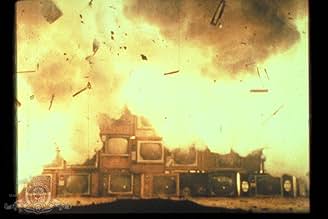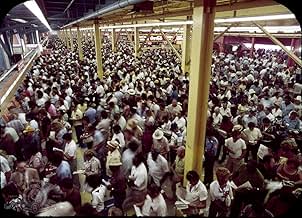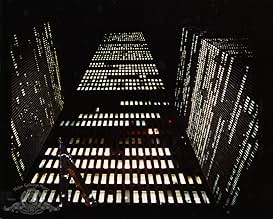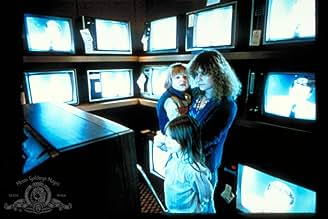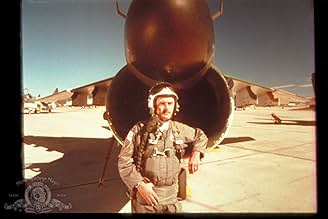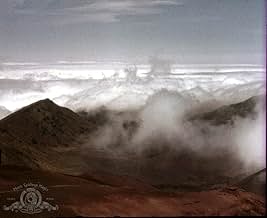Uma coleção de fenômenos fotografados de forma especializada, sem uma trama convencional. O filme enfoca a natureza, a humanidade e a relação entre eles.Uma coleção de fenômenos fotografados de forma especializada, sem uma trama convencional. O filme enfoca a natureza, a humanidade e a relação entre eles.Uma coleção de fenômenos fotografados de forma especializada, sem uma trama convencional. O filme enfoca a natureza, a humanidade e a relação entre eles.
- Direção
- Roteiristas
- Artistas
- Prêmios
- 6 vitórias e 1 indicação no total
- Self - On TV
- (cenas de arquivo)
- (não creditado)
- Self
- (cenas de arquivo)
- (não creditado)
- Self - On TV
- (cenas de arquivo)
- (não creditado)
- Self - On TV
- (cenas de arquivo)
- (não creditado)
- Self - On TV
- (cenas de arquivo)
- (não creditado)
- Self - On TV
- (cenas de arquivo)
- (não creditado)
- Self - On TV
- (cenas de arquivo)
- (não creditado)
- Self - On TV
- (cenas de arquivo)
- (não creditado)
- Self - On TV
- (cenas de arquivo)
- (não creditado)
- Self - On TV
- (cenas de arquivo)
- (não creditado)
- Self - On TV
- (cenas de arquivo)
- (não creditado)
- Self - On TV
- (cenas de arquivo)
- (não creditado)
- Self - On TV
- (cenas de arquivo)
- (não creditado)
- Self - On TV
- (cenas de arquivo)
- (não creditado)
- Self - On TV
- (cenas de arquivo)
- (não creditado)
Avaliações em destaque
An hour & a half later, I was - and I'm having to try very hard to find adjectives here - in fact I'm failing. It was The-Thing-That-You-Can't-Even-Tell-Someone-What-It-Is. Completely transfixed, transported, for 90 minutes of my life.
This film has no dialogue. It has no actors, apart from everyone & everything that Ron Fricke's camera touches. It has no plot, apart from just the simple, complex, unfolding story of the world.
The truth is, of all the films that people feel have really made an impact on their lives - and you only need to read through this lengthy thread to see how many of those people there are - this is one of the hardest to communicate to someone who hasn't actually seen it. You can compare it, perhaps, to things they might have seen - but there aren't that many to compare to. It has a kind of poetry on a whole different level from, for example, Man with a Movie Camera. The only things that spring to mind for me are Orphee or Last Year at Marienbad, but these are completely different kinds of movie, and even people who don't like them might be totally taken apart by Koyaanisqatsi.
Sure you could - rightly - use phrases like "breathtaking cinematography" or "unforgettable images". You could praise the music (which really opened my ears to Philip Glass). You could point out, as many have done, how the film made you look again at the world, & at your own place in it. Or you could try to relay its "environmental" message - and there are people, especially those who take any implied criticism of our species' waste and cruelty as a kind of personal insult, who will not like that message.
But none of these things would come close to capturing what makes this film so special. Like trying to explain "red" to someone who's never seen colours. You have to experience it. If possible in a cinema, sitting right down at the front, completely immersed in the screen and its images.
I know I'll never forget the first time I saw it. You might not either.
One of the things I also like about this movie is the fact that since there is no dialogue, it can be shown in any country in the world unchanged. We would all see it the exact same way. I like the idea of that very much.
one of the great things about this film is that while the intrusion of man is initially presented as profane and abhorrent, ultimately there is found a symmetry to the human experience that is as organic as anything found in the `natural' world. i used to be tempted to perceive humans as the only species on the plant that didn't fit, that threw everything out of balance, as it were. but over time it has become apparent that even the blight of man on earth is a naturally occurring phenomenon. the evolution of life is the destruction of life. the circle is unbroken.
So, Koyanisqaatsi. Boring junk to some, an involving masterpiece to others, and God knows what other adjective-noun combinations are out there (you can probably guess my opinion from the rating above). Most of these descriptions are fairly subjective, but it would definitely be wrong to regard Koyanisqaatsi as anti-cinema. It is anything but. Cinema, in its purest form, is a marriage of sound and visuals; everything else is just decoration. Dialogue? Storyline? Koyanisqaatsi harks back to an age when cinema was simply a filmed record of a situation. Was it not the Lumiere brothers who are generally regarded as the first pioneers of cinema? And is it not the case that their films comprised of nothing more than situations like a couple feeding their baby, workers leaving a factory, or the (in)famous Train Leaving A Station, which went down in folklore as causing people to flee the auditorium in panic thinking they were about to be hit by a train as it approached them on-screen? Koyanisqaatsi is cinema returning to its roots, to the days when the possibilities for film as an art form were wide open, free of commercial constraints and fickle audiences too narrow in scope to accept anything other than what they view as the given norm.
In a way it's fairly irrelevant what Koyanasqaatsi meant to me on a personal level, though I might get to that later. What's important is what Koyanasqaatsi represents. It's an interesting attempt (and a successful one in my view) to illustrate how a narrative can be created simply by editing together seemingly loosely related scenes and images. It reminds me of another cinematic milestone, the Kuleshov experiment, in which two separate images where edited together to create a third meaning, and which helped establish what is now known as Russian montage (and speaking of the Russian montage tradition, anyone who has seen Vertov's The Man With The Movie Camera will no doubt find traces of it in Koyanisqaatsi and vice versa). Koyanisqaatsi takes it one step further, perhaps even to its logical conclusion, using editing to create a new meaning for the entire narrative as a whole. It works on a gut level and sparks an emotional response, in a way it demands a response, be it boredom, amazement... it really depends on the person (as illustrated by the Reggio quote above). As such it's an example of cinema at its most subjective.
Coming back to the influence Man With A Movie Camera no doubt had on this film, I think what Godfrey Reggio has done here is take this specific style of film-making and turn it into what I, personally, view as a cinematic statement on humanity- and our technology's relationship with the environment around us. It's a pessimistic film, filled with Cold War anxiety (though it hasn't lost any of its relevance) - and in retrospect, I also found it reminiscent of an age when America still had a strong avantgarde movement in the shape of people like Reggio or Laurie Anderson (and in a way it's an interesting coincidence that 1983 also gave birth to another experimental documentary, Chris Marker's Sans Soleil, which is equally rich in scope and tackles the same philosophical issues, albeit from a slightly different angle).
I really wonder if the western world could produce a film like this today, in an age where cinema audiences are more fickle than ever, demanding a cut every three seconds and some sort of "surprise twist" at the end, with hardly a niche left for the Godrey Reggios of this world. But in a way I suppose it doesn't really matter. Koyanisqaatsi, to me at least, is one of the richest cinematic experiences anyone could possibly hope to have, and I doubt I'll see a film which will move me quite like this for a long time to come.
The images that are presented in the film are just beyond belief. The fantastic music score by that genius, Phillip Glass, compliments and enhances our experience. This film will live forever in spite of some of the comments submitted to this forum, because it deals with universal themes that will stay with us on this planet while human life will exist. This was pioneer movie making that later on became main stream. The originality being in the way the director presents the different sections in the film with some unusual photography that, while imitated, remains the standard for comparison with any new so called latest technique and innovation.
Kudos to Mr. Reggio, Mr. Glass and the people behind this gorgeous film.
Você sabia?
- CuriosidadesGodfrey Reggio was hooked on Philip Glass doing the music. He approached Glass through a mutual friend, and Glass replied, "I don't do film music." Reggio persisted, and finally the friend told Glass that the tenacious guy was not going to go away without at least an audience. Glass relented, though he still insisted he wasn't doing the music. Reggio put together a photo montage with Glass' music as the soundtrack, which he presented to Glass at a private screening in New York. Immediately following the screening, Glass agreed to score the film.
- Erros de gravaçãoThe two explosions at about 18 minutes into the film were shot with anamorphic lenses and not properly desqueezed for the film's 1.85:1 aspect ratio.
- Citações
[last lines]
title card: Translation of the Hopi Prophecies sung in the film: "If we dig precious things from the land, we will invite disaster." - "Near the Day of Purification, there will be cobwebs spun back and forth in the sky." - "A container of ashes might one day be thrown from the sky, which could burn the land and boil the oceans."
- Cenas durante ou pós-créditosEnd credits go over mashed voice recordings in English ranging from call operator answers to television news.
- ConexõesEdited into Wide Awake (2006)
Principais escolhas
Detalhes
- Data de lançamento
- País de origem
- Central de atendimento oficial
- Idiomas
- Também conhecido como
- Koyaanisqatsi
- Locações de filme
- San Onofre Nuclear Generating Station, Condado de San Diego, Califórnia, EUA(as seen from San Onofre State Beach)
- Empresas de produção
- Consulte mais créditos da empresa na IMDbPro
Bilheteria
- Faturamento bruto nos EUA e Canadá
- US$ 1.723.872
- Faturamento bruto mundial
- US$ 1.728.699
Contribua para esta página



